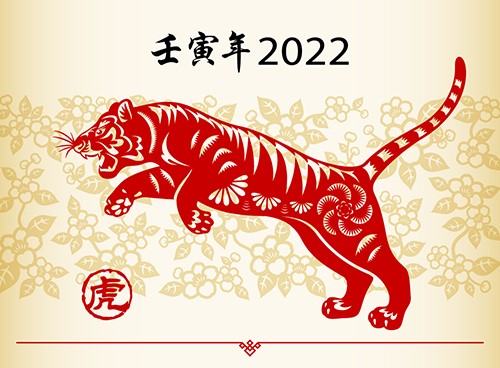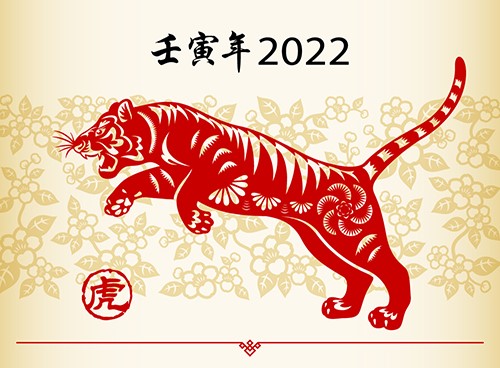-
Over one-fifth of the world’s population celebrates Lunar New Year on February 1st
It’s the most important holiday on the calendar for many Asian cultures, particularly the Chinese. We are heading into a year of the Water Tiger, which occurs every 60 years. In China, the tiger is considered the king of all beasts, symbolizing strength and bravery.
As we look forward to the Year of the Tiger in an environment of rising inflation and the potential end of the easy money era in several countries, the good news is that the growth momentum is generally trending up globally.

Rising Interest Rates, Rising Inflation China’s Central Bank (PBOC) is certainly making a strong and brave move at a time when many central banks around the world are taking an increasingly aggressive stance to counter rising inflation. With the U.S. inflation rate reaching a 40-year high, the Federal Reserve (Fed) communicated a hawkish move toward policy normalization in January. By contrast, the PBOC is on a different path and has been easing monetary policies to counter slowing economic growth in the fourth quarter. China achieved 8.1% GDP growth in 2021, despite the headwinds from its COVID-zero policy and the slowing for-sale residential sector. Yet, inflation has remained subdued in China, and so the PBOC can be accommodative at a time when other central banks have signaled tightening. Historically, most central banks in Asia Pacific followed the path of the Fed. However, this time around, each monetary authority is responding to different circumstances. We are heading into rare territory of diverging global monetary policies.
At one end of the spectrum, ahead of the Fed, central banks in South Korea and the U.K. have been raising benchmark rates to rein in rising inflation pressures. Most notably, South Korea’s benchmark rate is now back to the pre-pandemic level. The Monetary Authority of Singapore has also turned to gradual tightening of its local currency since October 2021. At the other end of the spectrum, inflation rates in China, Japan and Australia have also increased, but to a lesser extent than countries such as the U.S., the U.K., South Korea, and Singapore. The relatively lower inflation rates in these Asian countries are supported by country-specific measures that influence their domestic price trends; for instance, raising export tariffs on some steel products to shore up demand domestically in China and subsidizing fuel prices in Japan. The Bank of Japan continues to commit to an ultra-accommodative monetary policy, despite raising its inflation forecasts at the January meeting. The European Central Bank is also unlikely to hike rates soon, as it follows the sequence of tapering QE first, ending zero and negative interest rates, and finally raising rates. Positioning between the two ends of the spectrum, the Reserve Bank of Australia with a triple mandate – a stable currency, full employment, and economic growth – has an intention to lag other central banks in normalizing monetary policy, while watching the inflation risk and other central banks’ moves closely.
As some of these diverging capital market trends play out, currency movements are likely to be reshuffled in multi-asset portfolios. As we look forward to the Year of the Tiger in an environment of rising inflation and the potential end of the easy money era in several countries, the good news is that the growth momentum is generally trending up globally. Investors will likely pivot towards assets that can do well in this environment. Real estate rental income tends to rise when inflation rises and demand drivers improve, which makes real estate an attractive asset class for inflation hedge. The favorable investor appetite has been evidenced by the record-high global real estate transaction volume last year1, despite the headwinds from the pandemic.
1 Source: MSCI/Real Capital Analytics, Inc. The global real estate transaction volume of $1.7 trillion in 2021 was the highest on record since MSCI/RCA started tracking the data in 2001.

Apr 01, 2025
Working backwards: Dealing with unprecedented policy uncertainty
In this period of elevated policy uncertainty, real estate investors should focus on what they can and should do amidst all the noise.



